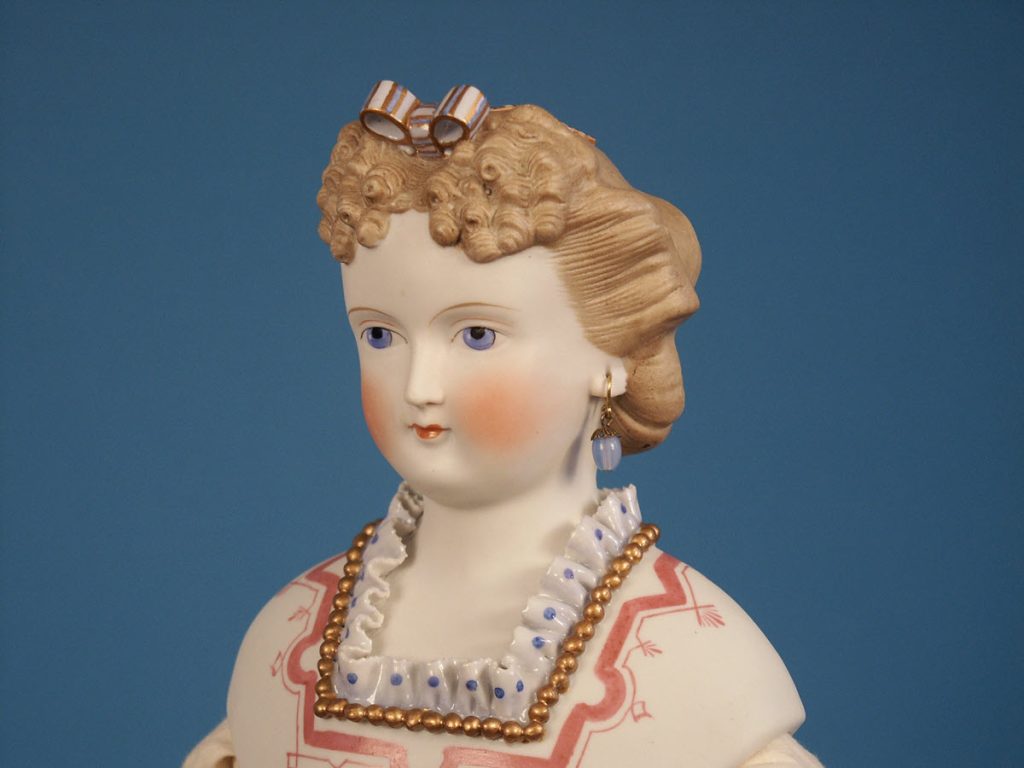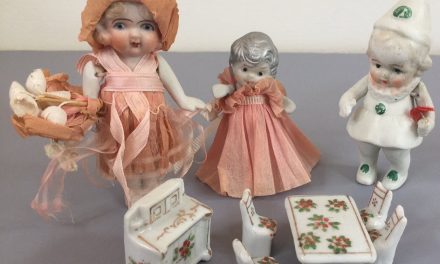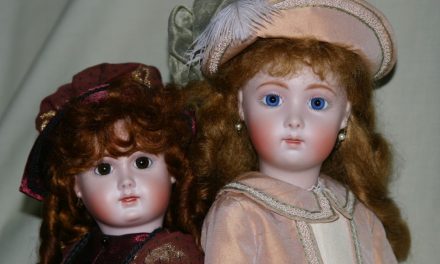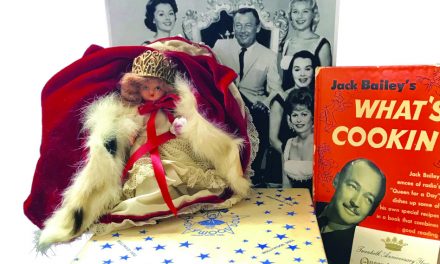
By Jan Foulke
Q: I am new to antique dolls, and I see older dolls referred to as “parian.” Can you tell me what that means?
A: Among doll collectors, the term parian refers to fine white bisque shoulder-plate heads from about the 1870s that have a white, untinted complexion. The facial features and the hair are painted, and while the complexion may have a hint of pink, it’s not full skin color. If the skin color is full, then the doll is referred to as simply bisque.
Parian actually refers to a white marble found on the Greek island of Paros, used by sculptors to make busts and statues. Early doll collectors borrowed this term for this particular type of antique doll, and it appears to be entrenched in the doll lexicon.
Parian dolls are usually ladies, often with elegant hairdos, but a few are children. Most parians have shoulder-plate heads, but occasionally one will be found with a swivel neck. They have cloth bodies with bisque arms and legs. They usually have blond or very light tan hair, but sometimes black. Eyes are usually painted, but a few may have glass eyes.
The more desirable models have fancier hairdos and hair ornamentation, such as ribbons, bows, combs, flowers, beads, or snoods. Some even have molded hats, scarves, or feathers — or even pierced ears. Some parian heads have applied decorations, such as separate flowers in their hair or molded ruffles or other decorations on their shoulder plates.
Most parian dolls are not marked, but doll researchers have identified some of the most lovely as coming from the porcelain factories of Kling & Co. and Alt, Beck & Gottschalck. A few were also made by Kister, Conta & Böhme, Simon & Halbig, and Kestner & Co.
Jan Foulke (retired) is an authority on antique and vintage dolls, with over 40 years of experience in the field. She’s the author of the full-color reference book “Jan Foulke’s Guide to Dolls.” Subscribe now to read Foulke’s columns in DOLLS online archive of past issues!






